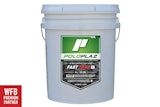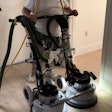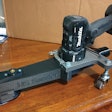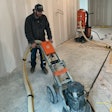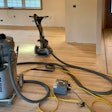
Russ Watts, who handles sales and service at Denver-based Lägler North America, answers:
I assume the idea here is to make the edger more versatile in terms of what extension cords would be compatible with the machine. After all, what a pain it is to have to match the edger with its cord, right?
My response: “Don’t do it.” There are several reasons. For starters, the extension cords packaged with these edgers from the factory are specific in terms of their length and conductor gauge. This is important for performance and motor longevity. When we see an edger come into our shop that is fitted with a straight-blade plug, we know almost certainly the edger has been run with other extension cords. Not only that, but these other cords are almost never shorter and of equal or heavier gauge than what the machine is designed to run with. Most of us know by now that these longer, skinnier cords have long been considered a big no-no, as they are assured to pull more amps and bring more heat to the motor and all other electrical components. This translates to more frequent failures and reduced motor life. Changing the plug from twist-lock to straight blade creates an invitation to use any old cord within reach of anyone. Leaving it on will serve more as a deterrent for such wild behavior and could very well save you in repair expenses and downtime. As further incentive, always remember, if the edger is within its warranty period, the warranty is very likely voided when a straight-blade plug is found to be attached.
Finally, on the topic of extension cords, sometimes I’ll get asked something like, “So what about situations such as new construction, where we don’t yet have power to all the outlets and the cord that comes with the edger won’t reach the power source we have to work with?” To this, we will tell you that the reality of using the wrong cords doesn’t change in these situations, and there are always better ways to bring that power to your work area than stringing up a couple hundred feet of spaghetti. In most cases, simply pull the 230 volts from the source for the long haul to your work area, hook up a power station and plug your factory extension cord into the 115-volt outlet of the power station.
The main takeaway here to always make that effort to run your equipment the way it is intended and do not alter your equipment in such a way that it could be unwittingly run some other way by somebody who doesn’t know any better.
RELATED: Your Sanding Machines Don’t Look Like This, Do They?









